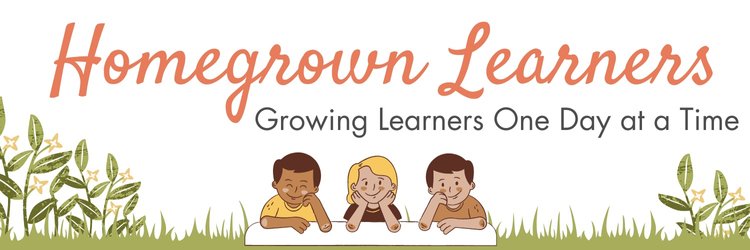It is a well-known fact that homeschooling our children is NO easy feat - add more than one child to the mix and it can get tricky!
I began my homeschool journey a little over six years ago, with four children in tow. Over the years we added two more to the mix, for a total of SIX, currently ages ten and under.
Being an experienced homeschool mom, I can honestly say I DON’T have all of the answers, but I have learned several tips and tricks which help our homeschool run much smoother.
Here are five of my top tips for homeschooling multiple ages:
Implement a Rhythm and Routine over a Set Schedule
In the beginning, I planned each and every subject very strictly - and while this can work in your favor, I found that when little blips happened in our day, it threw the whole schedule off and it became punitive rather than helpful.
Using a daily flow or rhythm worked much better.
Having a basic routine and order to the day made a huge difference and allowed more flexibility - which is key to homeschooling multiple children.
And beyond just the routine, block scheduling can be a huge help as well.
Block Scheduling in the Large Family Homeschool
The idea of block scheduling was absolutely life changing for our homeschool!
It’s especially helpful when you have very young children that still nap or when you would like to build in times for errands, appointments, etc…
While this concept seems very simplistic, it is extremely effective!
I have three blocks to my day: morning, afternoon, and evening.
For example; I typically designate our mornings for school (from 9-12). Our afternoons are designated for chores, lunch, nap, outside play, etc… And, during the evening we have dinner, baths, and family time.
If we have a day where we need to run errands, I can swap some activities in the afternoon for school or modify our day accordingly.
Time blocking helps to naturally organize your day.
Utilize Family Subjects
Family subjects are a HUGE benefit!
A few years ago I tried to do two levels of My Father’s World curriculum at the same time as trying to manage teaching three children to read, an early preschooler, and a newborn baby.
I literally felt like I was losing my mind!
That’s when I decided to simplify our homeschool and suddenly - what felt like chaos - subsided to a much calmer level.
Simplifying meant adapting Bible, science, and history into family subjects (think “one-room schoolhouse”). There are several curriculum choices that accommodate teaching multiple grade levels and many that are easy to adapt up or down depending on the levels of children you are teaching.
Sometimes just having your little ones tag along for science and history is enough, especially if you add in engaging read alouds that correlate with your studies.
I have also found that subjects like nature study, art, and music lend themselves to family learning.
Encourage Independent Learning
Large family or not, teaching your child to work and learn independently is an important skill to develop.
This skill development begins early in the toddler and preschool years by doing something as simple as learning to play or complete a task on their own. Laying the groundwork may require a little extra pointed teaching and habit forming, but it truly pays off in the long-run.
Along with teaching habits, there are also growing resources or computer-based math and other subjects or choosing a curriculum that is geared for independent learning.
Instilling independence leads to developing many wonderful traits such as perseverance, responsibility, and self-motivation.
Busy Activities for Young Children
Homeschooling with toddlers can get quite interesting, especially when they are very mischievous. Providing engaging “busy activities” can help to entertain your little ones so you can give more attention to your
school-age children.
I keep a box with several prepared activities for my toddler/preschoolers to play with. These are toys, puzzles, special books, or sensory activities that only come out during school so they remain fun and exciting.
During family subjects and reading times, I incorporate all of my children as much as possible. Providing them with coloring sheets or their own copies of their older siblings’ worksheets can help the little ones feel like they are a part of the learning as well.
Homeschooling multiple ages can be quite an adventure.
While some days may leave us frazzled and frustrated, others leave us joyful. As moms of several children, it’s important to give ourselves grace and remember that our seasons of life are constantly changing.
These years go by so quickly.
I hope these tips and tricks are helpful to you in your journey.
Share in the comments some ways you “survive” homeschooling multiple ages!
I want to encourage you to make memories, build bonds, adjust and make changes when needed, and overall, just have FUN!
Megan is a homeschool mom of 6, wife to Jon, former public school teacher, and follower of Christ. Homeschooling and homemaking are areas that the Lord has drawn her to be passionate about and it is her desire to be as intentional as she can in both.
She enjoys cooking, reading, gardening, history, and hiking in the beautiful mountains of East Tennessee. In her spare time, she is also a content creator for her YouTube channels Pennies and Salt , as well as her website, Pennies and Salt.










![Crampton Hodnet [CRAMPTON HODNET]](https://m.media-amazon.com/images/I/41ZBFFmv1vL._SL500_.jpg)





